From the Piedmont to the Rockies, outside money swamping candidates
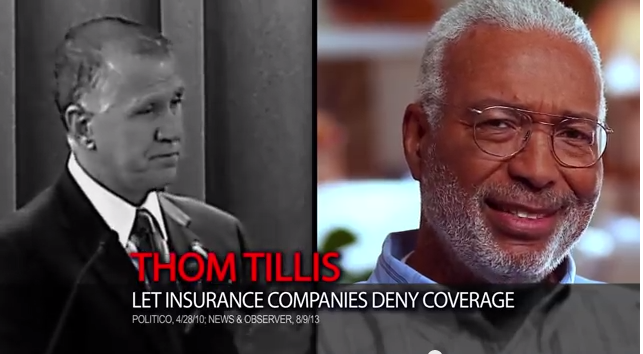
Senate Majority PAC has focused its efforts Thom Tillis in North Carolina; Image credit: Senate Majority PAC
Some of the candidates who are running to speak for you in Washington are having a hard time speaking for themselves in their own campaigns.
A Sunlight analysis of political ad buys in three states with highly competitive Senate races show that outside groups — including party committees, 501(c) “dark money” groups and super PACs — swamped the candidates when it came to buying TV commercials last month, according to a sample of buys we examined from three TV stations: WBTV in Charlotte, N.C., KWWL in Waterloo, Iowa and KCNC in Denver.
The findings:
- In North Carolina, where Democratic Sen. Kay Hagan is facing a challenge from Republican state House Speaker Thom Tillis, outside groups outspent the candidates by 8:1.
- In Iowa, where Democratic Rep. Bruce Braley and Republican state Sen. Joni Ernst are vying to take the place of retiring Sen. Tom Harkin, D-Iowa, outside spenders lapped the candidates 3:1.
- In Denver, where Democratic Sen. Mark Udall is trying to beat back a challenge from Republican Rep. Cory Gardner, outside groups dominated the ad spending by 2:1.
The discrepancy explodes when we look at advance buys made for October. Major outside groups like the Senate Majority PAC, an organization dedicated to supporting Democratic Senate candidates, have dropped millions to buy up airtime right before voters head to the polls (and as they are casting early ballots).
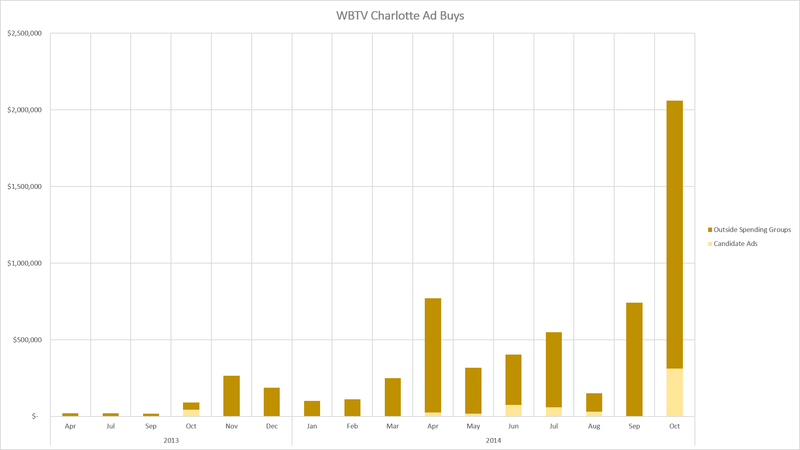
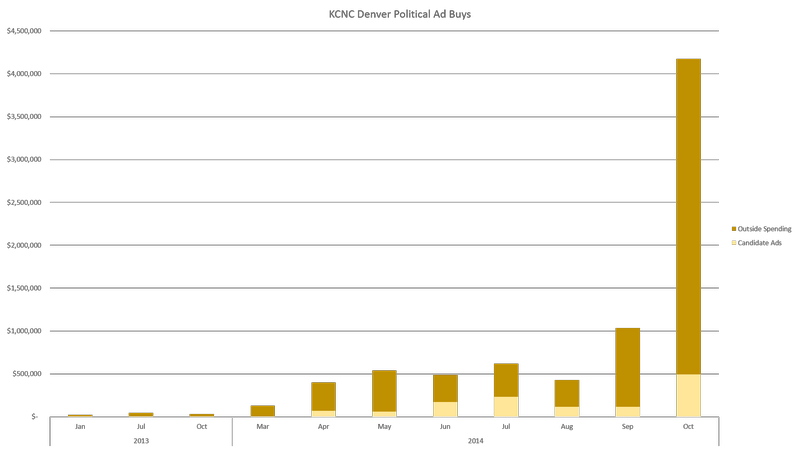
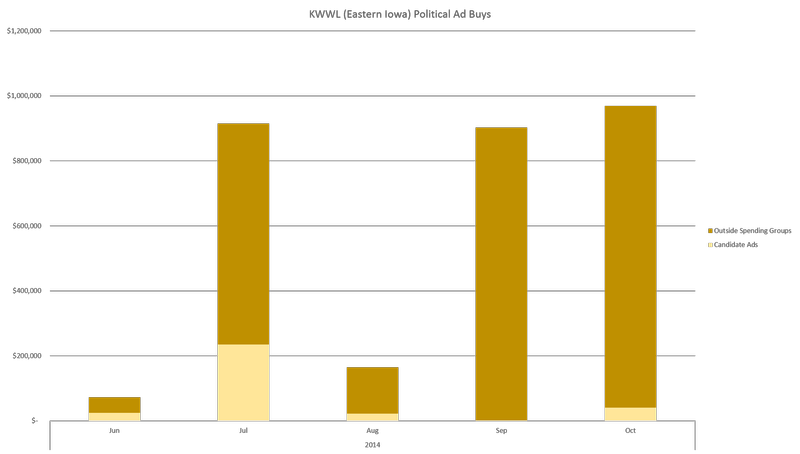
The data we analyzed came from the Sunlight Foundation’s Political Ad Sleuth, a tool that makes it easy to search ad files that television stations upload to the Federal Communications Commission (FCC). Unfortunately, this data comes in a non-standard non-machine readable format–meaning that there can be as many formats as there are TV stations. While we at Sunlight would love something easier to ingest than a scanned pdf of a printed piece of paper, we decided to take a deeper dive into the data at these three widely disparate stations to get a sense of what’s going on in the country on as a whole.
Some things we noticed:
1. Candidates appear to be holding their fire for fall.
This discrepancy held true across the stations we analyzed. We’re not sure why this happens, but it could have something to do with laws guaranteeing candidates lower prices beginning 60 days before an election. Candidates can afford to wait until closer to Election Day to purchase airtime, whereas outside spending groups are forced to pay retail. Federal candidates also have a guarantee under the 1934 Communications Act to purchase “reasonable amounts” of broadcast time on all licensed stations–meaning they aren’t in any rush to lock down reservations.
But there’s another wrinkle: Candidates can see just what we have: How many and which outside groups have already reserved time. That tells them if they have to retaliate, or can save their money for other purposes, like get-out-the-vote efforts. Call it “non-coordination coordination”–just another part of the weird dance between candidates and outside spending groups in the post-Citizens United world.
2. Koch-backed groups were big players in the Charlotte and Iowa:
In Charlotte, Koch-backed groups made up 11 percent of all television ad buys in the two-year span we analyzed. In eastern Iowa, that number was 18 percent. Groups in the Koch-brothers network were far less giving in Denver, accounting for just three percent of the spending at the station we analyzed. One one hand, that’s surprising, given that groups in this network have been active in states with competitive Senate races. On the other hand Denver is home to competitive house, governor and even state attorney general races, so the Senate spending is appears diluted.
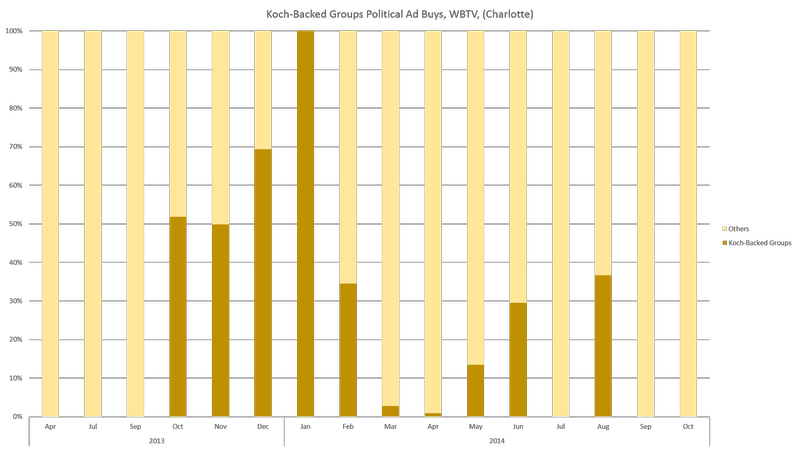
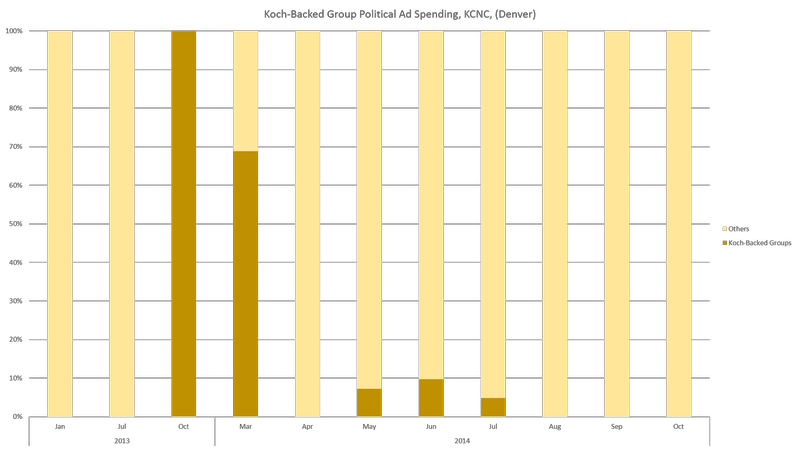
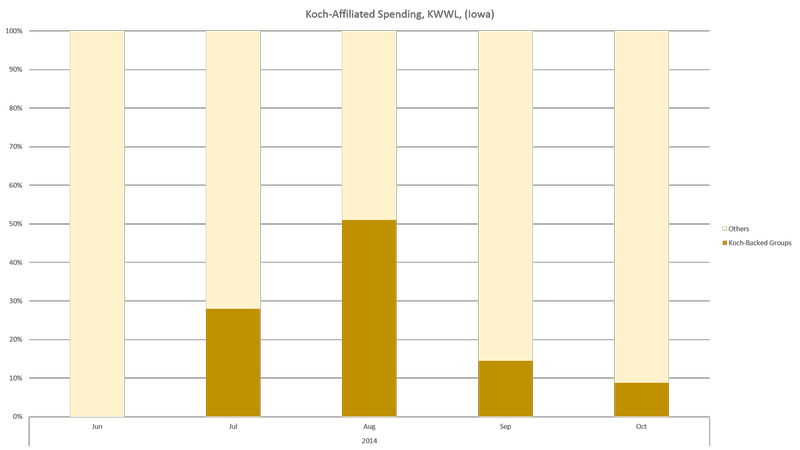
Democratic Party PACs are outspending Republicans, for now
Based on the purchases so far, Democratic Party-affiliated PACs are outspending their GOP counterparts.
- In Charlotte, the Democratic Senatorial Campaign Committee has outspent the National Republican Senatorial Campaign Committee by about 2-to-1.
- In Denver, the Democratic Senatorial Campaign Committee and the Democratic Congressional Campaign Committee have outspent their Republican counterparts by about 3-to-1.
- In Iowa, Democrats outspent Republicans 3-to-1 with money from their respective senate PACs.
While politics is a game of uncertainties, one safe bet is that the amount of money we’ll see flowing into these markets will go up dramatically as we get closer to November. Until that time, we here at Sunlight will be bringing you the stories behind the numbers in the untamed frontier of money in politics.

